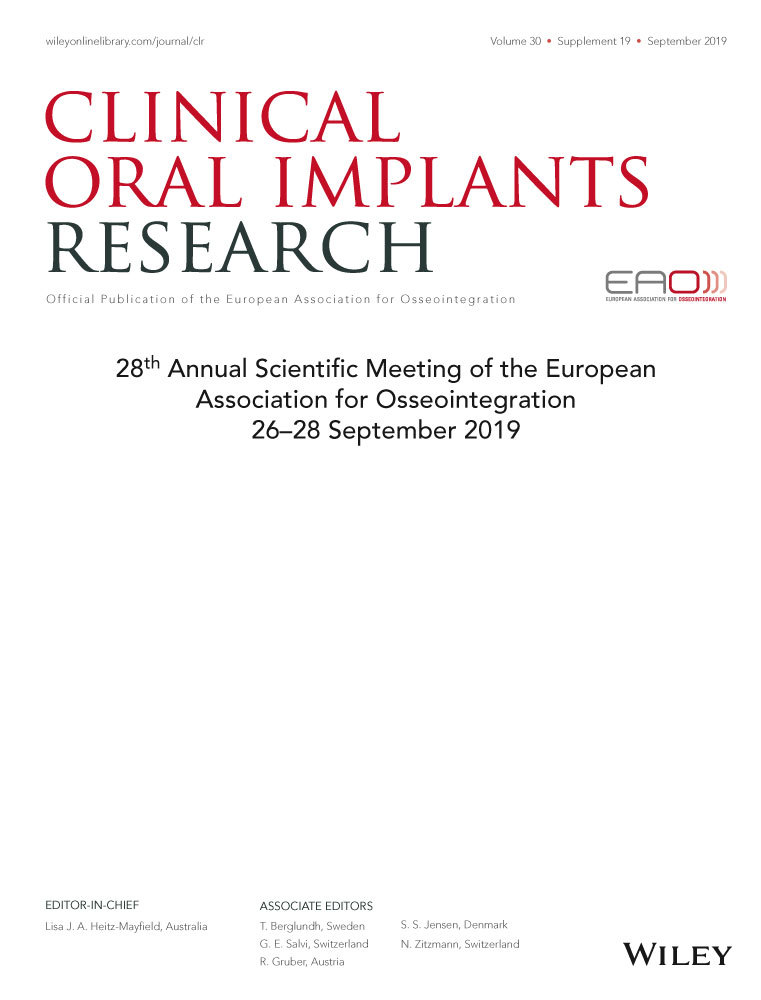Clinical and radiographic evaluation of Bio-Oss collagen as grafting material in indirect maxillary sinus floor augmentation
15591 Poster Display Clinical Research – Surgery
Background
The indirect- transalveolar sinus elevation technique using osteotomes, as described by Summers in 1994, has been successfully used for more than 20 years. A variety of grafting materials has been used to elevate the sinus membrane, such as deproteinized bovine bone, allografts, autogenous bone grafts or combinations of grafts.
Aim/Hypothesis
To evaluate clinically and radiographically, whether the use of Bio-Oss collagen presents advantages over other granular grafting materials during the indirect sinus elevation technique.
Material and Methods
In this case series of 5 patients, Bio -Oss collagen was used during indirect-transalveolar sinus elevation. Bio-Oss collagen is a combination of 90% xenogenic bovine bone with 10% porcine collagen. In all cases there was a 6 to 7 mm residual bone height. Radiographs were taken immediately after the sinus elevation and implant placement and after 3-year follow-up.
Results
The material proved easy to use and exhibited all the required healing potential to ensure positive treatment outcomes. All implants that were places presented primary stability. More than 4 mm bone height gain was noted radiographically. The main advantage of the use of Bio-Oss collagen was the consistency of the material, its radiopacity, and its handling characteristics. The highly purified porcine collagen allowed tailoring of the material to the morphology of the defect which made it ideal for placement in the sinus osteotomy site.
Conclusion and Clinical Implications
Bio-Oss collagen can be successfully used in the transalveolar sinus elevation osteotome technique and exhibits improved material characteristics compared to granular grafts.




